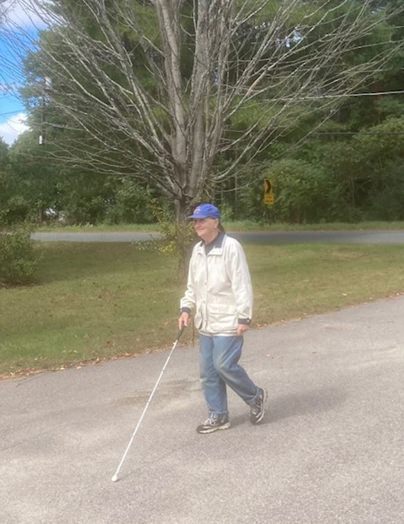
Through the ages blind people have used a staff, walking stick, or cane to explore their environment. This all changed in 1921 when James Big from Bristol, England painted his walking stick white to make it more visible. The concept caught on when Rotary clubs and the BBC encouraged all blind people to use white canes for identification. The concept spread to France and, in the 1930s, to the United States where Lions clubs promoted the white cane to identify blind people. By the late 1930s, state laws were enacted to protect blind pedestrians.
Want to subscribe to receive blog updates sign up today!
The next major advancement in cane mobility came after World War II when Richard Hoover used a long white cane to explore the environment along with a new method of moving the cane from side to side one step ahead of the traveler. This was the beginning of the Orientation and Mobility Specialist profession. Today O and M specialists teach young children to senior citizens how to use the long white cane and nonvisual environmental clues to negotiate around all kinds of obstacles. These techniques include listening for traffic and safely crossing the street.
In the past, blind people rarely traveled alone but now with the advanced O and M techniques blind people are able to travel independently with safety and dignity. The techniques have evolved but so have the canes. Historically the walking stick was made of wood. Now modern canes are made of carbon fiber and they are available with many different types of tips depending on the travelers preference.
Blind adults who learned to use the white cane as a young child never knew a time in their life when they didn’t have the advantage of traveling with a long white cane. Other adults sometimes have an adjustment and resist using the white cane until they discover the freedom and independence it provides.
I was taught to use the white cane at age 16 when all of my friends were getting their drivers licenses. This was very difficult for me because I did not want to appear different from my friends. I also resisted using the white cane until I met other capable blind adults who could travel more freely than I could because they had great cane skills. I realized that I would rather travel as a competent blind person than try to fake being sighted and risk a serious injury. I no longer walked with my head down. Rather I held my head up high and walked proudly and quickly for the first time in my life!
In 1964, Congress recognized the importance of the long white cane in providing freedom and independence to blind people and passed resolution HR 753 declaring October 15 to be White Cane Safety Day across the United States. Every president since Lyndon Johnson has observed this date as White Cane Safety Day for all blind Americans.
Now, a century after James Big painted the first white cane, blind people around the world can all go boldly with their long white canes!
Reference: https://www.njcounciloftheblind.org/brochures/history_of_white_cane.htm
For a subscription to my weekly blog on dwarfism and disability issues, go to https://angelamuirvanetten.com/blog/.

One reply on “To Boldly Go With a White Cane”
Thank you for sharing your story along with some history on the origin and use of the white cane. I found it very interesting.